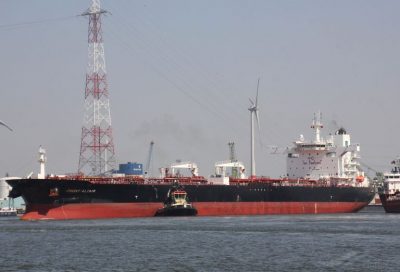Gulf of Oman Recalls Gulf of Tonkin Lies. The Use of “Deepfake Videos” Could Lead to Global War
Attacks, lies, and videotape

If a picture is worth a thousand words, then a video is worth a million. Online videos uploaded to the internet and shown around the world via news media, as well as social media, are telling a visual story, but missing the context and explanations which could only come in the form of words.
In the past, manipulated video scenes would have been an expensive Hollywood film industry product; however, deepfake is a video format that uses Artificial Intelligence and programs which are now inexpensive and readily available everywhere. The political implications of using deepfake could lead to a global war, or perhaps manipulating an election through the use of a damning video on a candidate. Creating an event for the purpose of blaming a country is called a false flag operation. During the Vietnam War era, a famous incident at the Gulf of Tonkin led to U.S. escalation, and the comparisons to the current Gulf of Oman event is unnerving.
Videos are the new gold-standard in believability. When people see a video over and over again, as what happened in the Douma chemical video uploaded in 2018 in Syria, they begin to believe the story being shown to them, even though there is no investigation or evidence presented. Later, when the real investigations and evidence are being presented, most people will not bother to read the text but will continue on believing what they saw in a few seconds, or minutes in the original video, which acts as indelible ink on the brain.
President Trump believes the U.S. military video proves beyond a doubt that Iran attacked two tankers in the Gulf of Oman. “Iran did do it. And you know they did it because you saw the boat. I guess one of the mines didn’t explode and it’s probably got essentially Iran written all over it,” Trump said during the early morning FOX interview. “You saw the boat at night trying to take the mine off unsuccessfully. Took the mine off the boat. And that was exposed. That was their boat. That was them. And they didn’t want the evidence left behind. I guess they didn’t know that we have things that can detect in the dark that work very well.”
The owner of the Japanese ship attacked disputes the story of any torpedo being used, as his crew reported to him that a flying object was the source of the attack. A torpedo attack would be below the waterline, but in this case, the damage was above the waterline.
An investigation will be needed, speak to all the crew and the captain, and assess the damages of the ships. German Foreign Minister Heiko Maas said, “The video is not enough.” Nathalie Tocci, a senior adviser to the EU, said,
“Before we blame someone, we need credible evidence. Iranians are deeply rational actors,” she said.
And for Iran to have attacked a Japanese ship when the Japanese prime minister was in Tehran “is not an especially rational thing to do.”
The previous attacks in Fujairah on two ships are still a mystery. Even after an investigation, no proof has been found as to who is responsible. Plenty of accusations have been made, but the evidence has eluded investigators. National security adviser, John Bolton, had promised to provide evidence that Iran is the culprit, but has failed to do so; however, Bolton said,
“It’s clear that Iran is behind the Fujairah attack. Who else would you think would be doing it? Someone from Nepal?”
In any criminal investigation, we know the first question asked is, “Who will benefit most by this crime?” The obvious answer is often the culprit; however, there is no substitute for real investigation skills and techniques and the time they require.
Many analysts feel that the Fujairah attack and the recent Gulf of Oman attack have been carried out by some actor who is motivated to create the conditions for a U.S. attack on Iran. The list of the possible actors is numerous. Though the proof is lacking, it would appear that Iran is the last actor who would benefit from a rush to an attack on itself, which could spark a regional Middle East war, which would pull in NATO and all of Europe, not to mention the full participation, and losses of the United States of America.
Perhaps, the end goal is not war, but another layer of pressure on Iran to accept the 12 conditions that Sec. of State Mike Pompeo delivered to them as an ultimatum. Sec. Pompeo was himself exposed in a video; however, it was not a deepfake, but instead, it was authentic in a speech he gave at Texas A&M University, in which he admitted as CIA director, “We Lie, We Cheat, We Steal”.
*
Note to readers: please click the share buttons above or below. Forward this article to your email lists. Crosspost on your blog site, internet forums. etc.
This article was originally published on InfoRos.
The Globalization of War: America’s “Long War” against Humanity
Michel Chossudovsky
The “globalization of war” is a hegemonic project. Major military and covert intelligence operations are being undertaken simultaneously in the Middle East, Eastern Europe, sub-Saharan Africa, Central Asia and the Far East. The U.S. military agenda combines both major theater operations as well as covert actions geared towards destabilizing sovereign states.
- ISBN Number: 978-0-9737147-6-0
- Year: 2015
- Pages: 240 Pages
List Price: $22.95


